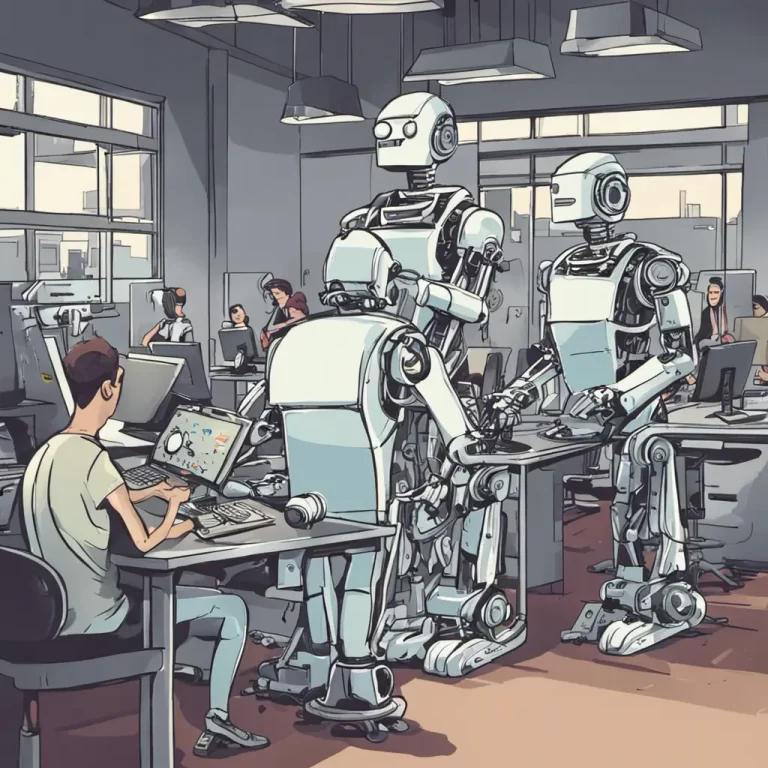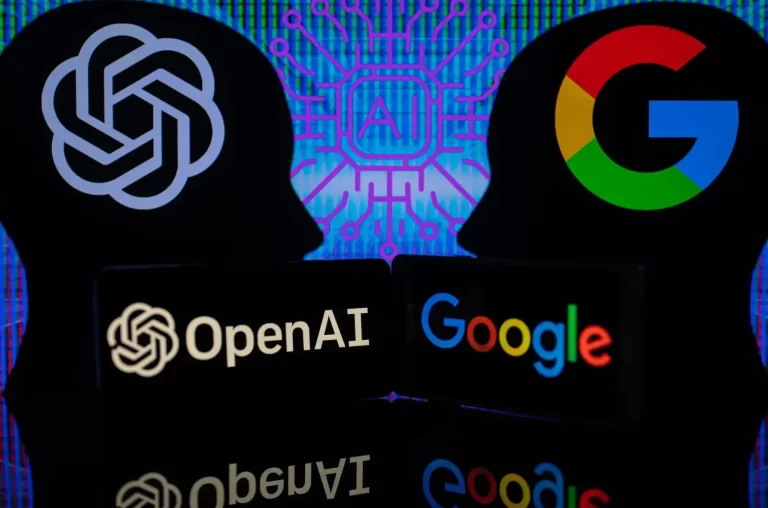Machine Learning: The Ultimate Guide
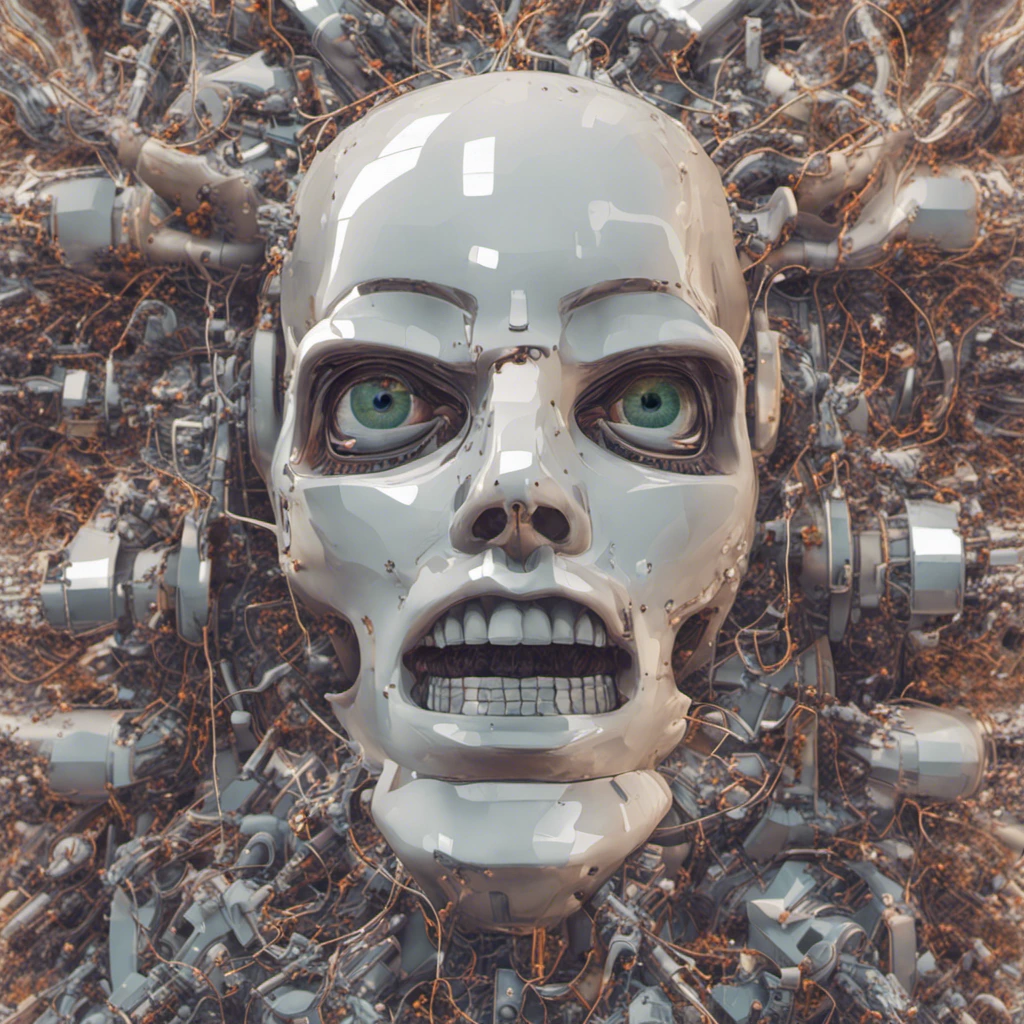
Machine learning is a branch of artificial intelligence (AI) that focuses on using algorithms and data to mimic human learning processes and gradually improving its accuracy.
IBM- An American multinational technology corporation- has played a massive role in machine learning history, as Arthur Samuel coined the term and bagged a milestone in AI by winning a checkers game against a computer in 1962.
According to the Google crash course, machine learning can be 91% accurate.
Machine learning enables statistical methods and algorithms to make predictions and uncover insights and this has led to innovative applications like Netflix’s recommendation engine, chatbots, predictive text, language translation apps, cyber-security, medical diagnosis, and self-driving cars like Tesla.
67% of the companies have already adopted machine learning as its use excels across different fields
Machine learning can use various learning methods like supervised learning, unsupervised learning, semi-supervised learning, and reinforcement learning along different models such as neural networks, decision trees, support vector machines, k-means clustering, and more.
We can guess by the arrangement, that the average value is maybe around 80 or 90 and are also able to determine the highest value as well as the lowest value, but what else could we do?
We can look at the database and see that the most popular color is white, and the oldest car is 17 years, but what if we could predict if a car had an AutoPass by looking at other values?
This is what Machine Learning is for! To analyze the data and predict its outcome.
The Machine learning algorithms develop a model based on sample data called ‘training data’, to make accurate or close-to accurate decisions and predictions.
What is the Importance of Machine Learning?
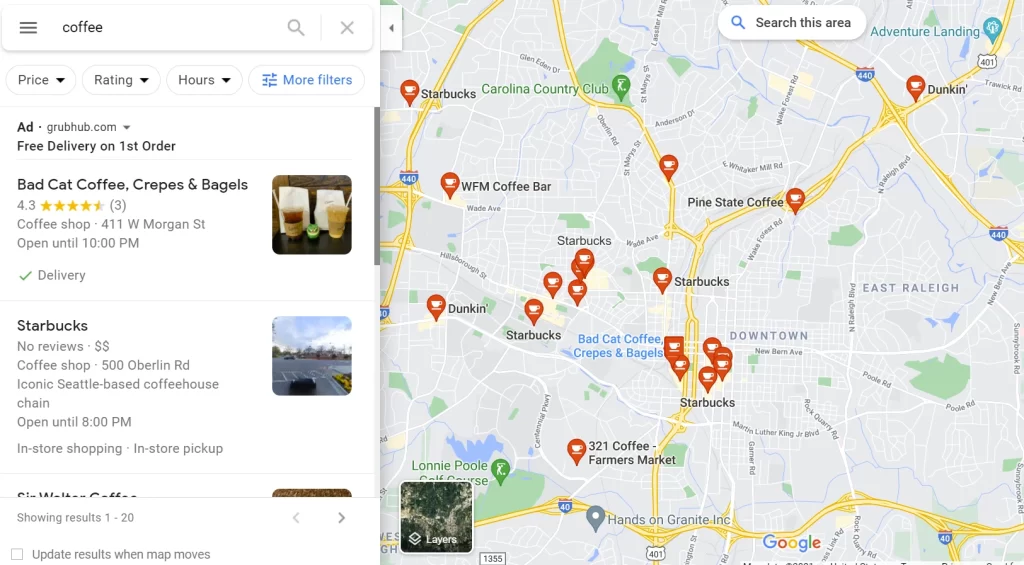
You may be aware of this map. Yes! That’s the google maps you use almost every other day to either find the best coffee shops in town or look for a destination when you have no damn idea of the route.
Google map uses machine learning models to decide the best (shortest) route between places just for you.
1. Data Analysis and Decision Making
It allows large enterprises to analyze massive volumes of data and extract the valuable information by unleashing patterns and trends that businesses can use to make decisions, identify opportunities and eliminate risk.
Insurance companies like Aviva, Centriq and claim genius use this for fraud detection.
2. Automation and Efficiency
The machine learning algorithms can be automated to perform repetitive tasks and complex processes to skyrocket productivity and efficiency, which reduces human error and allows the organizations to focus on high-value activities.
This website has designed a 24×7 chatbot to handle customer inquiries.
3. Innovation and product development
Have a look at Amazon. This $1.31 trillion e-commerce company uses machine learning to personalize product recommendations for their customers. Likewise, other companies also leverage on data-driven insights to understand customer needs to tailor their offerings and stay ahead of their competitors.
4. Industry transformation
As mentioned before, machine learning has been integrated into multiple industries like healthcare, Facebook, Google and Uber. In fact, it has become a competitive differentiator for many companies.
What are the Types of Machine Learning?
Supervised Machine Learning
A subcategory of machine learning and artificial intelligence that relies on labeled examples or data to teach algorithms to correctly sort or predict information.
The system is trained with input labeled data that teaches the algorithm which will be able to predict the output for new input data.
Some examples are image classification, spam detection and speech recognition.
Take instagram for instance. The app uses supervised machine learning to classify images.
Unsupervised Machine Learning
Unsupervised machine learning uses the algorithm to learn from the data itself and finds patterns or clusters in the same unlabeled data.
The system is not trained with labeled data and has, which means that it doesn’t contain any corresponding output label for the input data so it groups similar data together to generate an accurate and contextual output.
ChatGPT understands the underlying structure and pattern of our prompts to generate personalized answers and keep the context in the future.
Even Netflix uses this program to create personalized recommendations for their users.
Reinforcement Learning
This machine learning program learns from the error and trial based on rewards or penalties through interaction with the environment.
This interaction helps the algorithm receive feedback based on those rewards and penalties.
Some real life examples of reinforcement learning include robotics, gaming and self-driving cars.
Self driving cars like Tesla uses the system to learn to drive by receiving feedback from sensors and cameras.
Reinforcement learning is also used to teach a robot to navigate a maze by rewarding itself for finding the correct path and penalizing it for taking the right path.
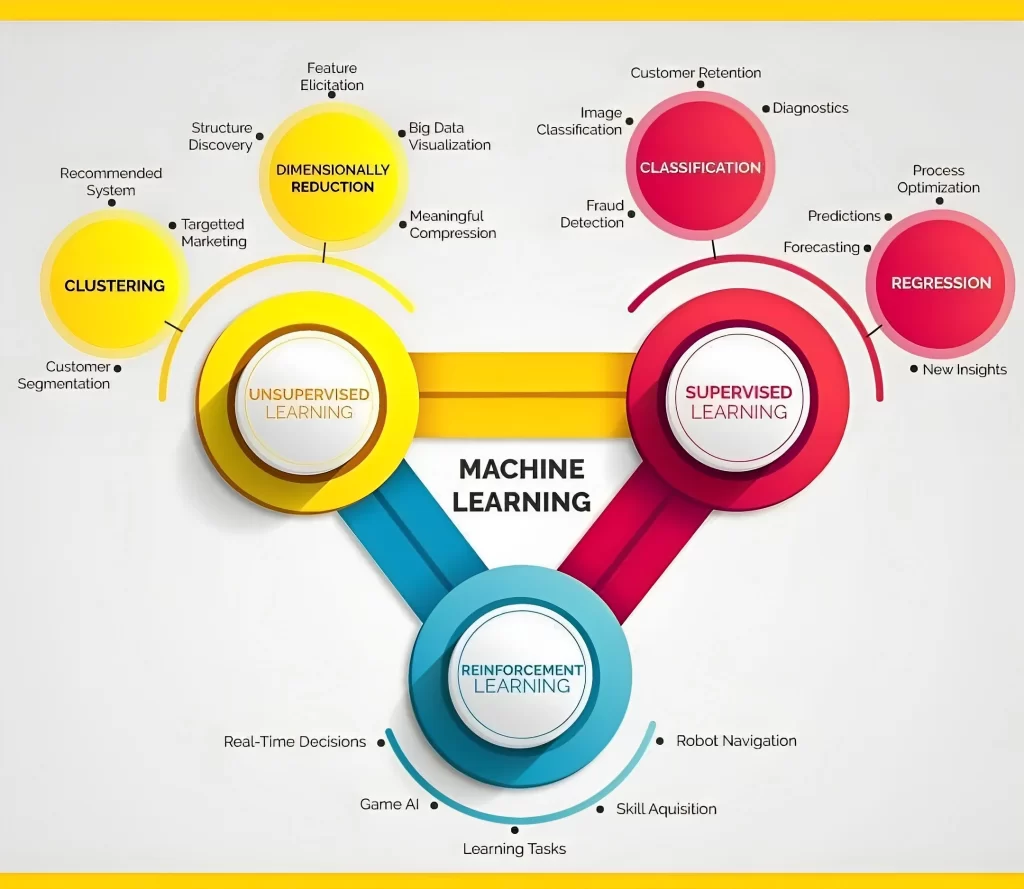
A.I Vs. Machine Learning
AI and machine learning are interchangeably used, but they’re different from each other despite being interconnected.
Simply speaking, AI is a computer software that imitates human thinking to conduct complex tasks while machine learning is a subcategory of AI that enables the data-trained algorithms to develop models that are capable of performing complicated tasks.
Currently, machine learning is a predominant method used by AI, which is a broader term for creating computer systems and software that exhibit human cognitive abilities.
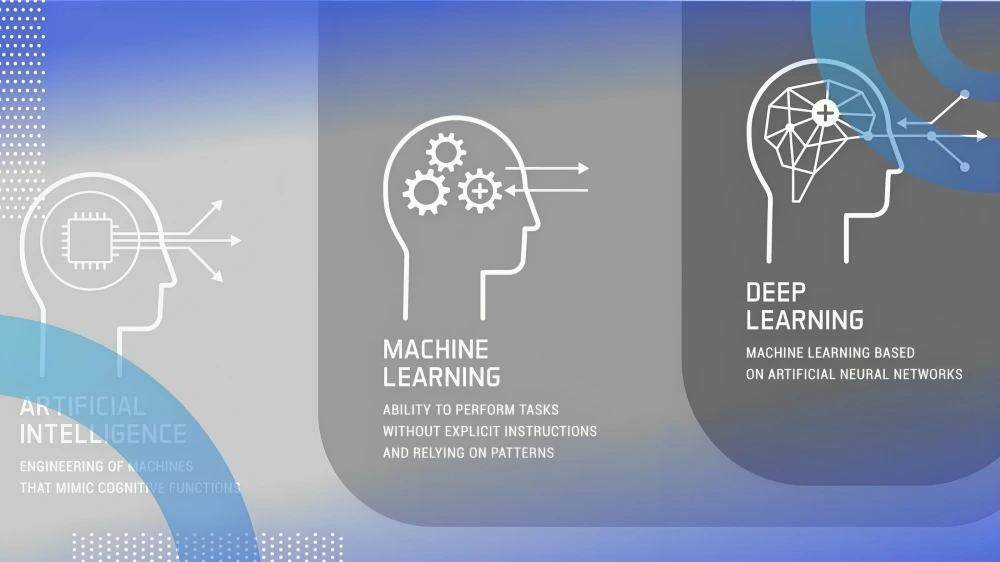
Machine learning Vs. Deep learning
While machine learning is a subset of AI, deep learning is the subset of machine learning that uses artificial neural networks (computational models inspired by the human brain) to mimic the learning process of the human brain.
So we can say that, deep learning is a type of machine learning that enables the artificial neural networks to acknowledge patterns in data.
That means that machine learning and deep learning are both types of AI, however, machine learning demands minimal human interference. To put it into frame, this is how you imagine it.
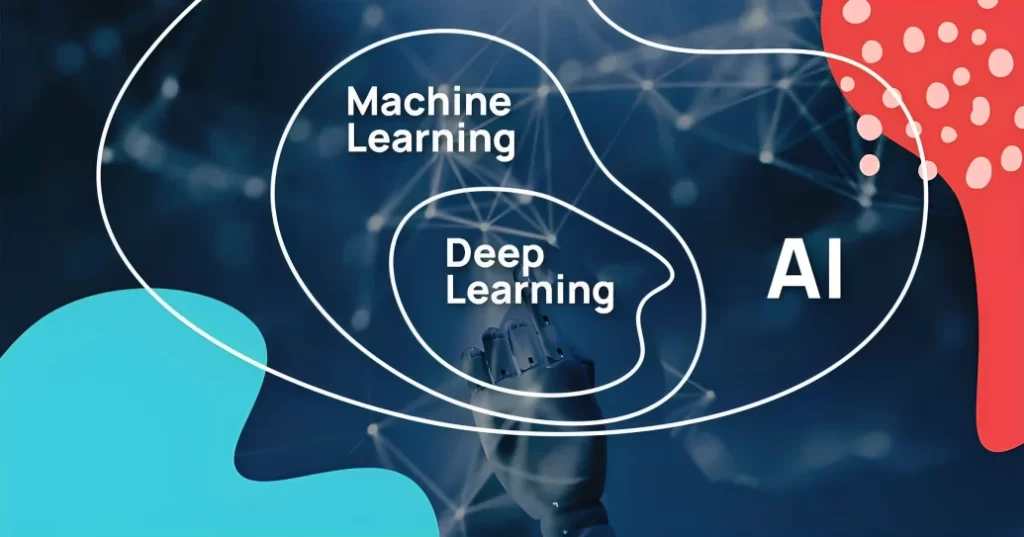
How does Machine Learning Work?
Machine learning uses algorithms to analyze data, learn from it and make predictions or decisions based on the receptive learning.
The programming goes under certain processes:
- Data Collection: Collect data that can be used to train the algorithm
- Data preparation: After the data has been collected, it needs to be aligned and cleaned to use in the algorithm.
- Model training: The algorithm learns from the data and bends according to the parameter for improved accuracy.
- Model evaluation: The algorithm needs to be evaluated to ensure effectiveness and accuracy after it’s trained with prepared data.
- Model Deployment: Finally, the model is deployed to make decisions and predictions based on the new data.
Machine Learning Algorithms
As mentioned before, machine learning is widely used in social media personalization, business intelligence image recognition, TV, movie and video recommendation, health care personalization, traffic prediciton, product recommendations and to stay ahead of the competition.
Machine learning algorithms are important to train models capable of carrying analysis, reasoning and learning.
There’s a wide range of machine learning algorithms available:
- Linear regression
- Logistic regression
- Decision trees
- Random forests
- K-nearest neighbors
- Support vector machines
- Neural networks
- Deep learning
Here’s a breakdown of each machine learning algorithm:
- Linear regression: A supervised learning algorithm used for predicting and forecasting values that fall within a continuous range.
- Logistic regression: A supervised learning algorithm mainly used for binary classification tasks.
- Decision trees: This type of supervised learning algorithm can be used for both both classification and regression tasks via a hierarchical structure of branching decisions to predict outcomes.
- Random forests: This learning method gathers multiple decision trees to improve accuracy, therefore, making multiple decision trees to predict the final outcomes.
- Nearest neighbors (K-NN): KA non-parametric algorithm is used to classify and regression of tasks. It assigns a new data point a label based on the majority vote of its k nearest neighbors.
- Support vector machines (SVM): A supervised learning algorithm used for both classification and regression tasks. SVM separates data into different classes by finding an optimal hyperplane in a high-dimensional feature space.
- Neural networks: A type of machine learning algorithm that is modeled after the structure of the human brain. It consists of interconnected nodes, called neurons, organized in layers to process and analyze data.
- Deep learning: A subset/subcategory of machine learning that uses artificial neural networks containing several hidden layers to imitate the learning process of the human brain.
It’s highly effective when it comes to processing complex data like images, speech, and natural language.




